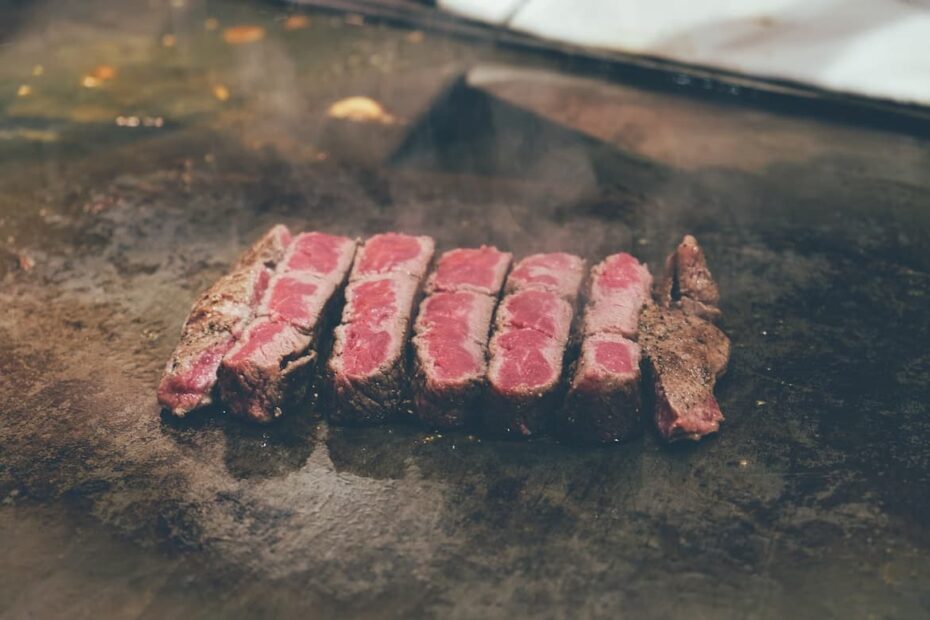The love of meat is expressed by the desire not only to eat deliciously, but also to always be confident in the quality and ability to cook it properly. Let’s take a look at what degrees of doneness exist and how to determine them by touch if you don’t have a special culinary thermometer at hand.
How to choose meat for steaks?
The choice of steak meat depends on several factors, such as your preferences for flavor and texture, budget, availability, and the type of steak you plan to cook. Here are some steps that can help you choose the right steak meat:
- Type of meat: Meats with soft and juicy fibers such as veal, beef, or pork are best for steaks. If you’re looking for a more chunky flavor, then meat with a fatter marbling, such as Angus meat, may be right for you.
- The level of roasting: If you like your steaks with a pinker center layer, you should choose a meat with less fat, such as veal or pork. If you are more of a darker color preference with a more pronounced flavor, you should go for beef or meat with a fatter marbling.
- Thickness: The thickness of the meat can affect how it will cook. If the meat is too thin, it can dry out during cooking, and if it is too thick, it can be overcooked on the outside but raw on the inside. The optimal thickness of the steak is about 1.5-2 incs.
- Cutting time: If you want to cook a perfect steak, you should choose meat that has been cut no earlier than one hour before cooking. This will allow the meat to retain its flavor and texture.
According to the American classification system, there are 7 degrees of roasting meat. The difference between them is determined by the temperature in the center of the steak:
- Blue, or extra-rare. In the section, it is almost raw meat with a light crust, which is formed within 1-2 minutes of frying. The meat is then wrapped in foil and left to languish for about 10 minutes. The temperature inside the steak reaches 46-49 °C.
- Rare. In the section – red meat, along the edge of which an appetizing crust of a darker color has formed. The temperature inside the steak is 49-55 ° C.
- Medium rare. The cut shows meat of bright red-pink color. There is less “blood” in this steak and pink juice appears. This type of meat roasting is determined by a temperature of 55-60 ° C.
- Medium. The most popular degree of roasting. As a rule, the meat no longer “bleeds” and pink juice flows out when pressed. The temperature inside is 60-65°C, the beef is still soft and juicy.
- Medium well. The meat on the cut is already more gray-brown, the juice is transparent when pressed. The temperature inside the steak during this roasting is 65-69°C. The medium well cooking degree is an ideal solution for those who absolutely do not like raw and semi-raw meat.
- Well done. This is fully cooked meat, completely brown on the cut. The temperature inside is 71-100 °C, which means it’s a perfectly roasted piece of beef. Some gourmets consider this kind of roasting excessive because it dries out the meat.
- Two well done, or Overcooked. Heavily roasted meat that has reached maximum toughness. The steak is heated to 100°C.
Important. For New York, Filet Mignon, Tornados and Chateaubriand steaks, we recommend medium rare, for Ribeye steak – medium rare or medium, for Porterhouse and T-Bone – medium or medium well.
Interesting. Different degrees of roasting are used for beef and lamb. Since pork contains a large number of microorganisms that are killed only at high heat, it has only one degree of roasting – well done. Note that while all types of roasting can be applied to a rack of lamb, the best option for a leg of lamb is medium to well done.
How to determine the degree of doneness of steaks by touch?
You can determine the degree of doneness of beef by using your hand. If you press the soft area between the thumb and the base of the palm of the other hand with the index finger of one hand, its softness will correspond to the softness of the meat of the blue degree of roasting. If you connect the thumb and forefinger of your left hand, as if in an “okay” gesture, and then touch the palm of your left hand with your right index finger, at the base of your thumb, you can find out what the rare degree of roasting is. The same manipulation with the thumb and middle finger will allow you to determine the degree of medium rare roasting by touch, with the thumb and ring finger – medium well. Similarly, with the thumb and little finger – well done. There is no “best” degree of steak doneness, because it all depends on taste preferences. However, medium is considered the best.
The article was prepared for you by Jeff Vertes, the analystc of Bestcasinosincanada.net
